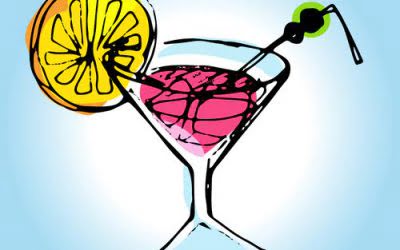Glutamate/nitric oxide, γ-aminobutyric acid, opioids, serotonin, dopamine, adenosine, cannabinoids, norepinephrine, vasopressin, neuropeptide Y, neurosteroids, and protein kinase C all modulate rapid tolerance. Most studies have evaluated the ability of pharmacological manipulations Sober House to block the development of rapid tolerance, but only a few studies have assessed their ability to reverse already established tolerance. Neglected areas of study include the incorporation of a key element of tolerance that involves opponent process-like neuroadaptations.

Structural analysis of FeSA@FibBLG

Ultimately, your body becomes less sensitive to a drug or substance over time with regular use. When you first started using the drug, whether it was for medical or recreational purposes, you likely needed a relatively small amount of the substance to achieve the intended benefits. With time, however, that dosage amount no longer gives you the same results. This indicates that your body has learned how to metabolize the substance more efficiently.
Increased Drug Toxicity
Diverging from conventional methods that use inorganic carriers, in the current work, we sought to utilize a readily available protein material, β-lactoglobulin (BLG) amyloid fibrils, as the supportive framework for atomically dispersed iron. Moreover, the exceptional gelling property of BLG fibrils allows for the easy production of hydrogels22, which anticipates a delayed digestion process and a prolonged action time within the gastrointestinal tract due to their high viscoelasticity23,24. For a more specific BAC estimate, you can use a BAC calculator that factors in your weight, sex, the number of standard-sized drinks you’ve had, and the time that’s passed since your last drink. BAC can range anywhere from 0.01% (slightly “feeling it”) to 0.30%+, which is dangerously high.
- However, this is faulty thinking, as an individual with a high tolerance for alcohol is still going to experience the adverse effects of long-term alcohol use.
- However, pregnenolone sulfate and dehydroepiandrosterone sulfate, negative allosteric modulators of GABAA receptors, facilitated rapid tolerance to alcohol-induced hypothermia in male mice (Barbosa and Morato, 2002).
- This is a simple rule, since tiredness will lead to more drunkenness and you losing control faster.
- In most cases, it can take anywhere from two to five weeks during a period of complete abstinence to lower your tolerance level.
How long will I have alcohol intolerance?
Some enzymes are present that can metabolize the substance, but at a prolonged rate, and they cannot compensate for the ADH deficiency. Thus Asians tend to get drunk a lot faster than Americans or https://businesstribuneonline.com/top-5-advantages-of-staying-in-a-sober-living-house/ Europeans. The difference is so dramatic that if an Asian person with ADH deficiency consumes the average amount consumed by people in the West, they might develop an alcohol flush reaction.
- B, Fourier-transformed (FT) magnitudes of the experimental Fe K-edge EXAFS signals of along with reference samples.
- Alcohol works by manipulating natural chemicals in the brain called GABA (gamma-Aminobutyric acid).
- However, other factors will also affect the alcoholic feature of the beverage.
- It is a disease of the brain that has made you incapable of functioning without the drug.
- GABA is an inhibitory chemical that slows down activity when it’s time to rest and relax.
- Pharmacological treatments via G9a-mediated epigenetic mechanisms increased NPY expression in the amygdala and reversed rapid tolerance to the anxiolytic-effects of alcohol (Berkel et al., 2019; Sakharkar et al., 2012).
